Jutting out from mainland China, the 900km (559 mile) long Korean peninsula separates the Sea of Japan from the Yellow Sea. An ancient civilization populated by often warring tribal states was unified into three kingdoms (Goguryeo, Baekje and Silla) in 57 BCE. The Baekje kingdom established their capital of Hanseong in the area of modern-day Seoul. Heavily influenced by the Chinese, the three kingdoms shared similar cultures and languages and maintained cooperative control over the peninsula for centuries. Beginning in 668 CE, a series of messy internal struggles saw the Silla kingdom take sole control of the region, a tenuous grip it held for roughly 220 years. A short revival of the three kingdom concept occurred between 889 and 935 CE before the Goryeo kingdom (an homage to the older Goguryeo kingdom) established a dynasty that would last for 450 years (with about a 100 years of harassment from the Mongols). Goryeo (from which the name Korea is derived) chose the northern city of Kaesong as its capital. The years trying to avert a Mongol invasion took a toll on the Goryeo royal court, and in 1392 CE it was overthrown by the Joseon kingdom who re-established Hanseong as the capital and left an indelible mark on Korean culture. Etiquette, social norms, government bureaucracy and even the language of modern Korea all evolved during the Joseon dynasty which lasted until 1897. Their 500 years of rule were not entirely idyllic. Japan saw the peninsula as a stepping stone to the Chinese mainland and invaded Korea twice in the 1590s (considered to be the largest seaborne invasion in history until the Normandy landings during WWII).
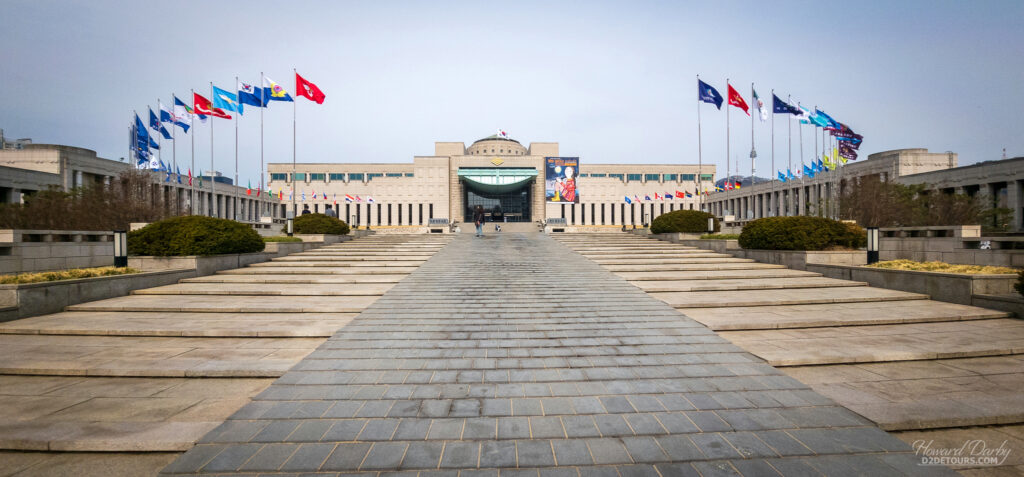
With support from the Ming (Chinese) dynasty, Joseon forces were ultimately successful in repelling the Japanese, though at a horrific cost in terms of lives lost and property destroyed. In the early 19th century, the Joseon dynasty was embracing a foreign policy which increasingly isolated the country from all external influences save those of China. Not every member of the court was onboard with that policy however. Toward the end of the century that dissention provided Japan with an opportunity to tout the benefits of engaging in commerce with their empire. Perhaps taking a lesson from their experience with the United States a couple of decades earlier, in 1876 Japan forcibly convinced the Kingdom of Joseon to sign the Treaty of Ganghwa Island, an unequal treaty which ultimately paved the way for Japan to annex Korea in 1910. The “Imperial Japanese Occupation,” which was not a particularly happy time in Korea, came to an end in 1945 when Japan surrendered to the US ending WWII. At that time the country was divided into Soviet occupied territory (North Korea) and US territory (Republic of Korea). The city of Keijō, as Hanseong was known during the Japanese occupation, was formally renamed Seoul, the capital of the Republic of Korea.
On June 25, 1950, the Communist army of North Korea invaded the South.

The entire country (North and South) suffered appalling losses during the ensuing war. Millions of lives (military and civilian) were lost and virtually no major city escaped massive damage. Seoul was lost and recaptured on four separate occasions with one estimate stating that at least 191,000 buildings, 55,000 houses, and 1,000 factories were destroyed during the battles. After three years it had largely become a war of attrition, and a cease-fire was declared in 1953. While South Korea may have relied heavily on foreign aid prior to the war (being largely an underdeveloped agrarian economy), in the decades following the country underwent an intense modernization effort and today boasts one of the largest mixed economies in the world.

Dollars – We averaged $278/day Canadian ($203 USD / €190) for our 5 nights in Seoul. Seoul itself was not ridiculously expensive, but when we spread the cost of our flight from Fukuoka over only 5 days it really bumped up the average. We also stayed in the most expensive section of the city, the Gangnam district, but had specifically chosen it because of its central location.
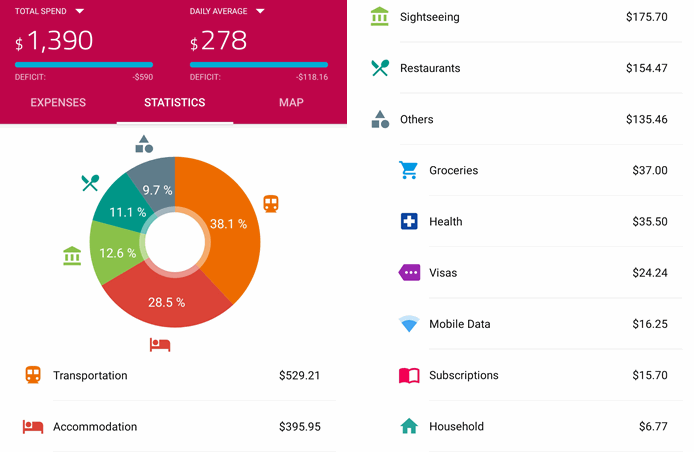
Environment – One of our nomadic friends described the Gangnam district as the “Manhattan of Seoul” and I thought that captured its essence perfectly. Densely populated and highly urbanized, with lots of expensive restaurants, but great access to public transit to explore further afield. We typically had our main meal of the day when we were out and about so had no trouble finding reasonably priced restaurants elsewhere. Despite the neighborhood’s energy, we were amazed at how traffic noise would simply fade away once you were a few meters down a side street. Our Airbnb was just a half block off a major thoroughfare (4 lanes of traffic in each direction) and I thought the traffic noise was virtually non-existent.
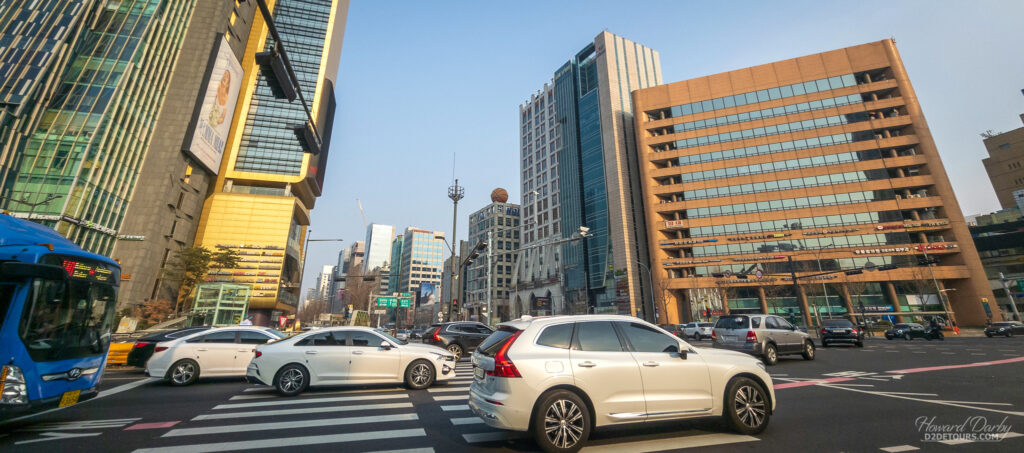
Tips, Tricks & Transportation – Before we left the Seoul Incheon airport we each purchased a “T-Money” card at one of the convenience stores inside the airport (4,000 KRW (₩) per card / $4.15 CA$, $3.07 USD, €2.82), and then loaded each card with ₩40,000 for bus and subway fares. The convenience stores will only accept cash to purchase and load T-Money cards and although there were several ATM machines in the airport terminal, only one would actually accept our cards for a cash withdrawal, so if you find one isn’t working, head to the next one.
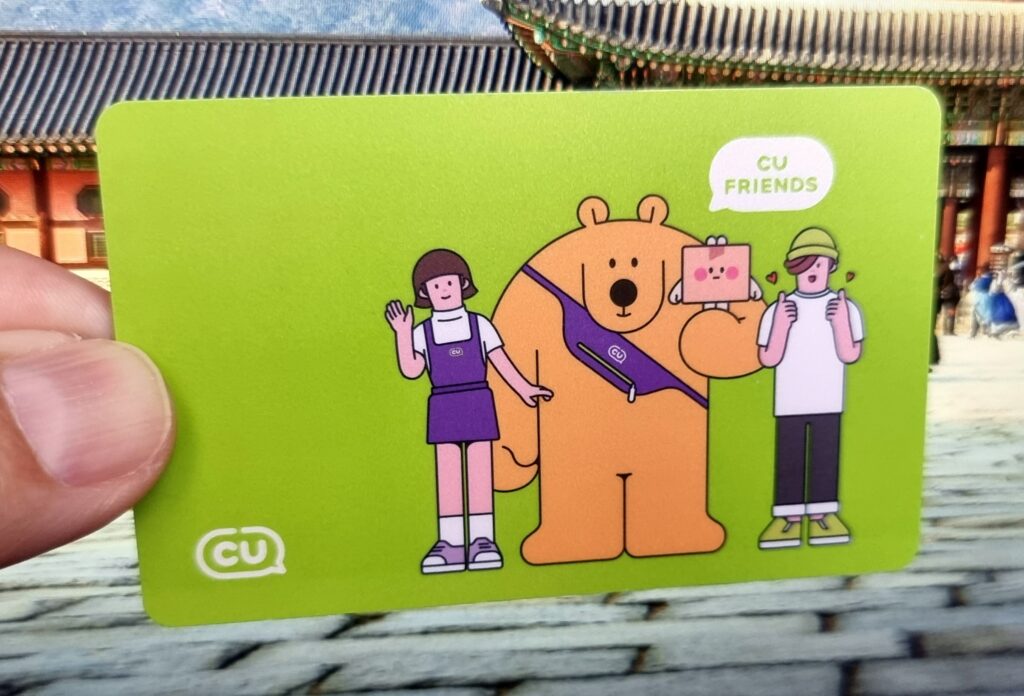
The T-Money cards work like all the transit cards we’ve used in other major centers. Tap as you pass through the subway gates (or when boarding a bus) and the display will let you know how much money is left on your card. The cards are reloadable and machines for reloading were easy to find in the subway stations.
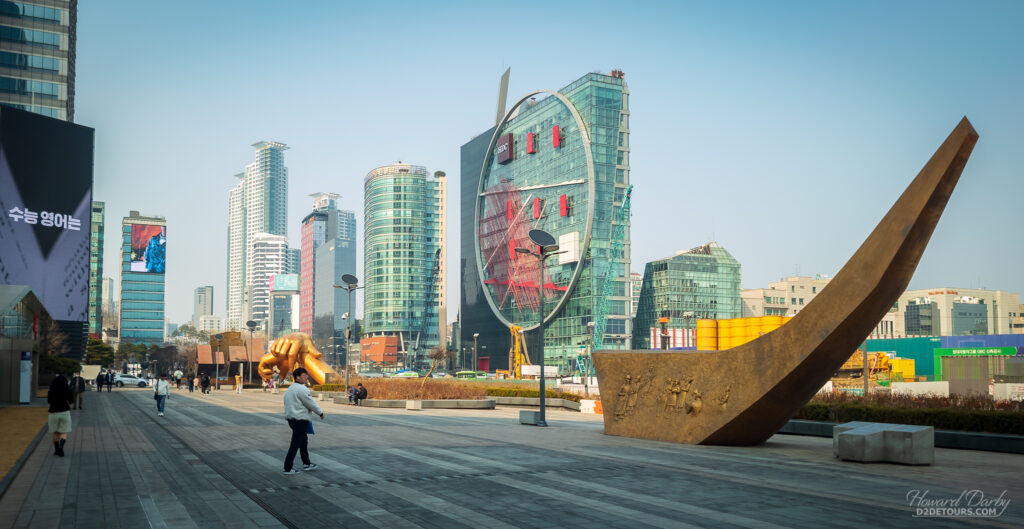
The Incheon airport is about 50 km (30 miles) from the Gangnam district. Through more good luck than good management one of the stops on the limousine bus service route (route #6009) was just steps from our Airbnb. You can use your T-Money card to cover the bus fare so if you do purchase one at the airport don’t bother buying a separate bus ticket for the limousine bus – just head outside, find the stop for the #6009 and tap your card upon boarding. The fare was ₩17,000/pp ($18 CAD / $13 USD) which was slightly less than taxi fare would have been and was a very comfortable, efficient mode of transport. We used the service again to get to the airport for our departing flight. Not quite as efficient (the bus was running 15 minutes behind schedule) but at least the bench we waited on was heated, much appreciated at 6:45am! Click here for the 6009 bus schedule.
Google Maps may be a navigation godsend in other cities but in Korea it’s pretty useless as the Korean government will not share mapping data with Google. Download “NAVER Map, Navigation” (Android, Apple) – it worked beautifully for navigating the streets or transit options.
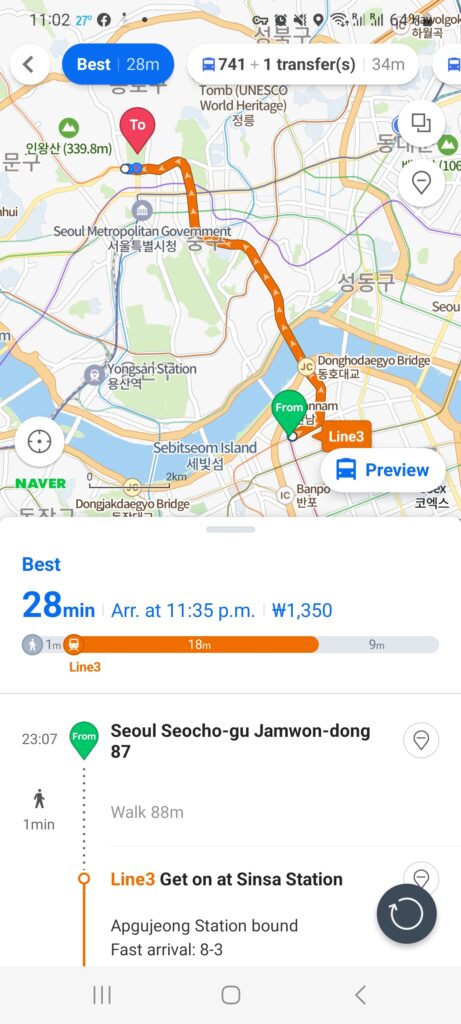
Pay attention to which direction you’re going on the subway to ensure you’re on the right side of the tracks. There’s pretty good signage on the entrance level of the subway stations and usually a map listing all of the stops can be found down on track level, which is helpful to confirm you are heading in the right direction. The trains come quite frequently (we rarely waited more than 10 minutes for a train) and the NAVER app actually counts down to the train’s arrival.
When using your T-Money card on the regular city buses, be sure to tap as you board at the front and tap again as you exit from the middle.
If you find yourself constantly looking down at your phone screen while navigating the city streets don’t worry – the sidewalk curbs at major intersections are helpfully lit with red/green lights to let you know if it’s safe to cross so you never have to break eye contact with your precious mobile device.
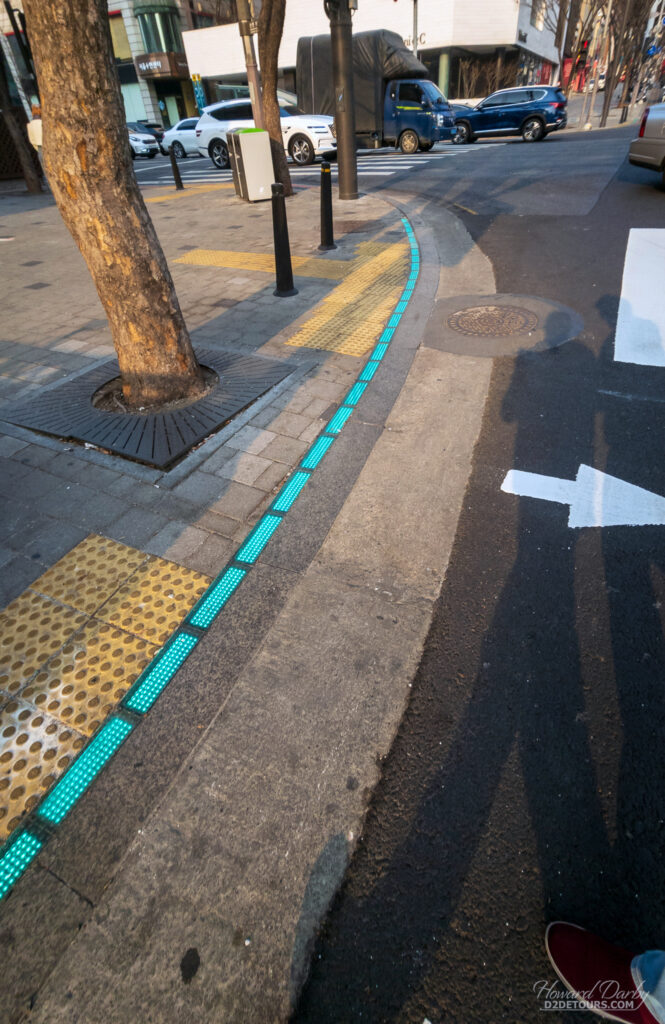
Out and About – In amongst the modern chrome and glass structures of the trendy Gangnam district is the peaceful Buddhist temple, Bongeunsa. Dating from 794 CE, it was originally known as Gyeonseongsa and was located near the city of Yeoju, about two hours southeast of Seoul. During the Joseon dynasty Neo-Confucianism was the accepted state ideology and practitioners of Buddhism were often persecuted. However, by the late 15th century, Buddhism was experiencing a revival, with the royal court even publishing Buddhist material. In 1498, three years after the death of Seongjong of Joseon, his third wife, Queen Jeonghyeon, had the Gyeonseongsa temple reconstructed, renaming it Bongeunsa (“the act of honoring the king”). Roughly fifty years later, the temple was relocated to Seoul (Hanseong), where it became the main Buddhism temple until a fire in 1939 destroyed most of the buildings and the Korean War ravaged the rest. Restoration work over the decades has returned the complex to much of its former glory, and the 28m (91ft) stone statue of Maitreya (Future Buddha), built in 1986, presides in silent serenity over the grounds.
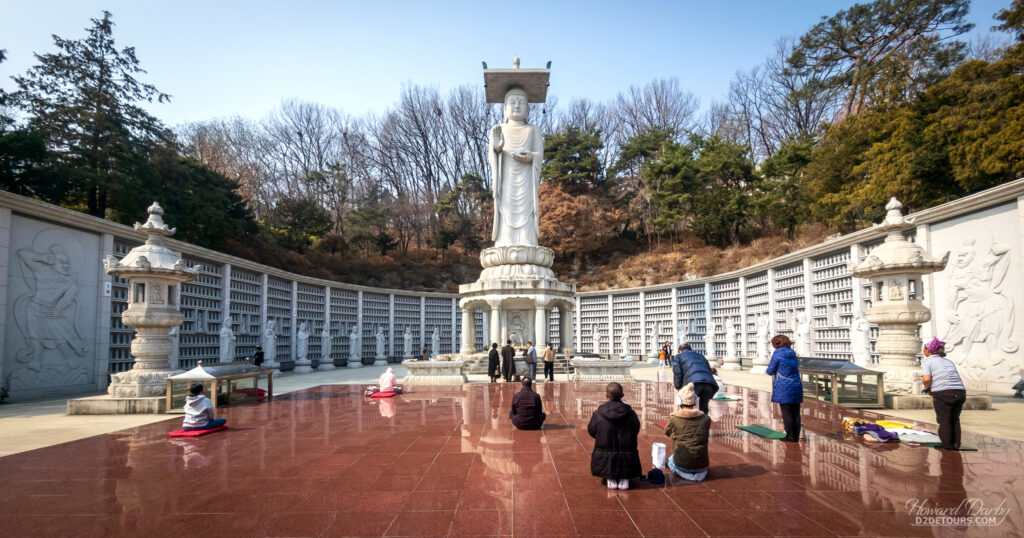
About a 20 minute walk from Bongeunsa is Seonjeongneung Park, within which are the burial mounds of King Seongjong, Queen Jeonghyeon and King Jungjong. The Park is closed on Mondays, and otherwise has an entrance fee of ₩1,000/pp ($1.05 CAD). Rather barren in February, during the summer it would be a lovely reprieve from the busy streets of Seoul and really felt more park-like than a cemetery, with a few points of interest.
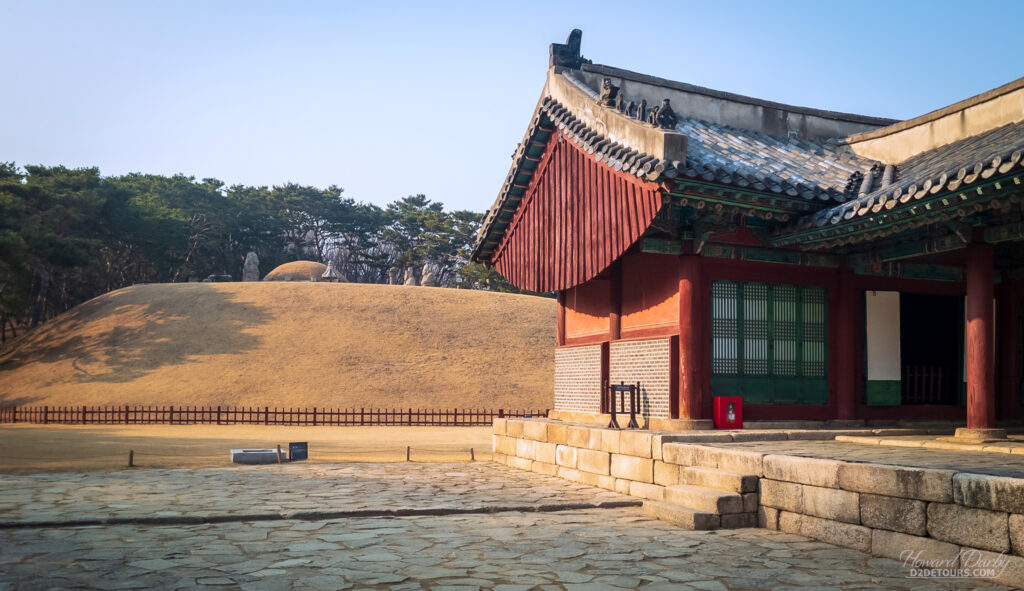

Place of brilliance and fortune, Gyeongbokgung was originally constructed in 1395 as the principal palace of the Joseon dynasty. Like so many historical structures, time has not been kind to this complex. During a Japanese invasion in 1592, fire destroyed the palace. For years the area lay in ruins before the government launched a massive restoration project in 1867. Over ninety percent of the (restored) palace buildings were demolished during the Imperial Japanese Occupation. Full-scale restoration began anew in 1990. While the buildings standing today are all modern construction they have remained faithful to the original aesthetic and are quite striking in detail.
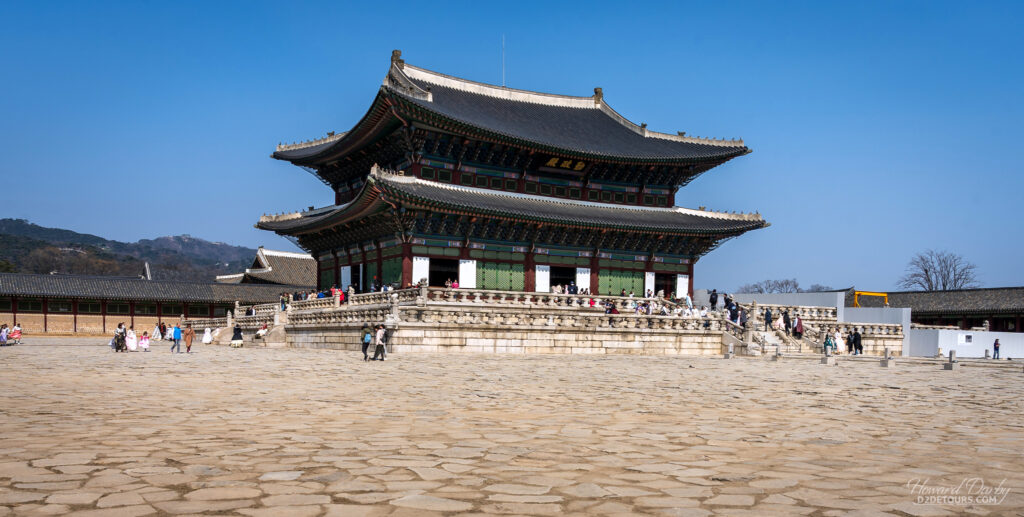
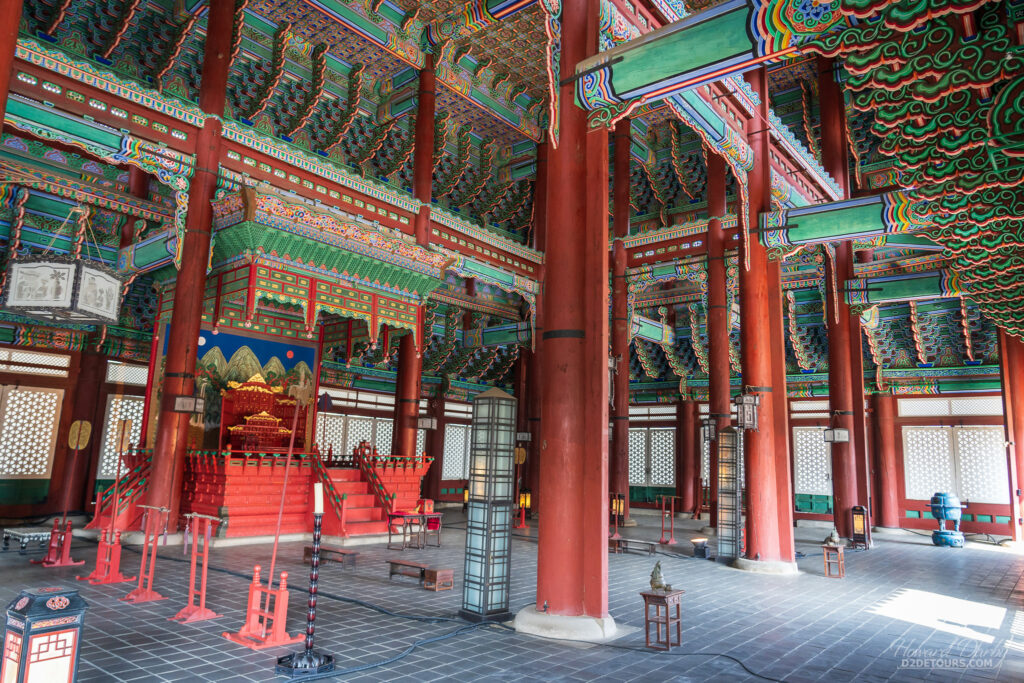
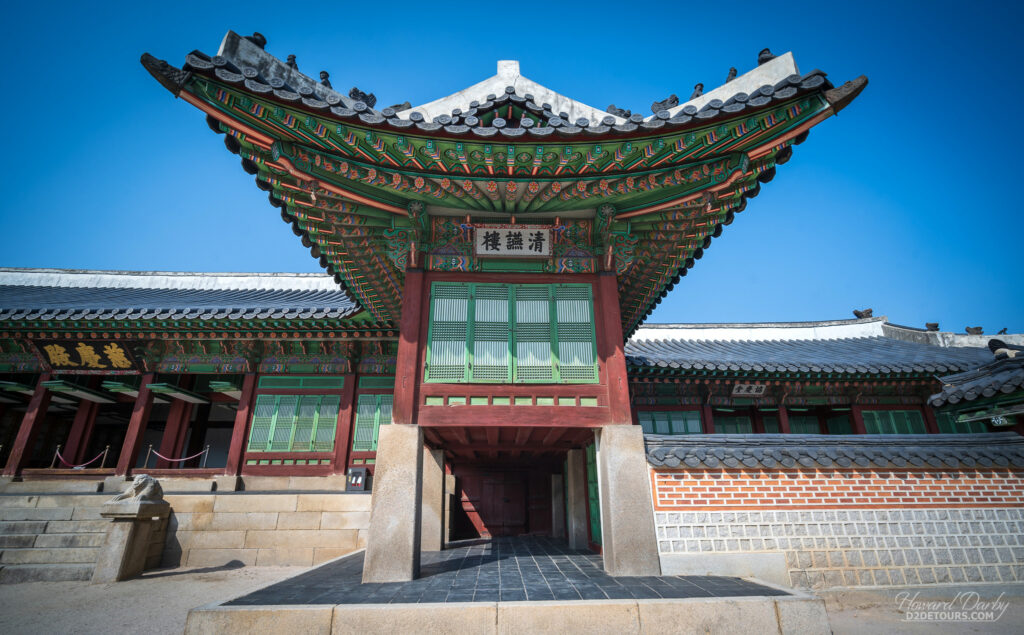
There are four entrances to the palace: Gwanghwamun Gate (main gate) on the south, Yongchumun Gate (west), Sinmumun Gate (north) and an entrance on the east side next to the National Folk Museum of Korea. This is the side through which we entered. We hustled our way over to the Gwanghwamun Gate to catch the changing of the guard ceremony which occurs everyday at 10am and 2pm (except Tuesdays when the entire palace complex is closed) only to discover the ceremony is actually OUTSIDE the complex. We were still able to appreciate the spectacle from a short distance and I thought the upside of it being outside was that if you missed it during your visit to the palace you could come back another day and watch it for free.
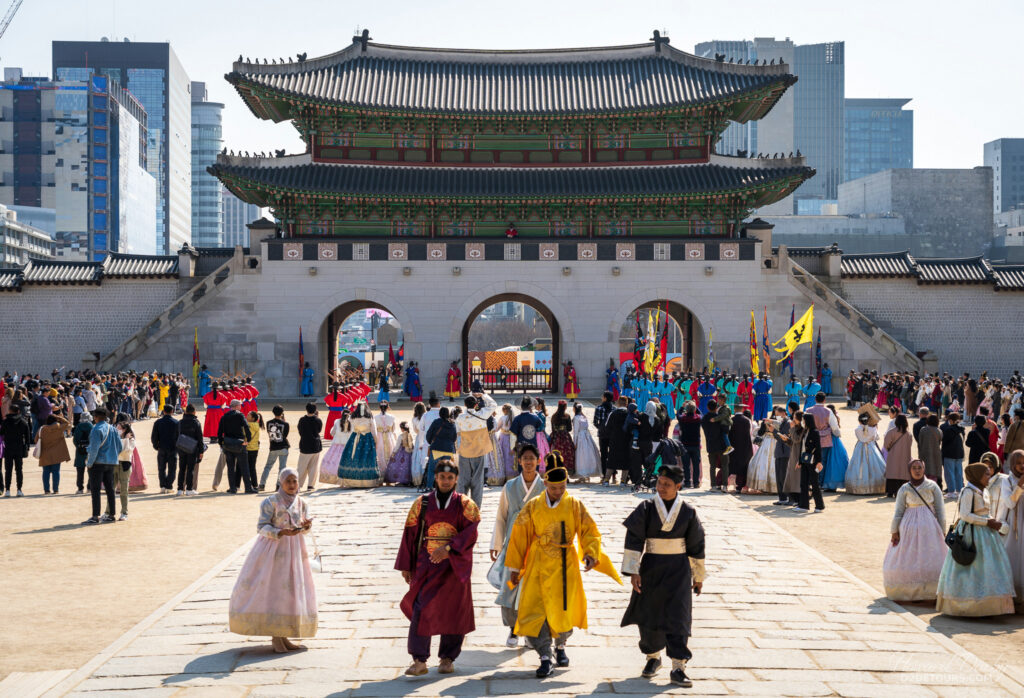
The entrance fee is ₩3,000/pp ($3.15 CAD) or it’s free if you’re wearing a hanbok (traditional Korean clothing). There are multiple shops offering hanbok rentals, and unlike Japan (which rents gorgeous kimono ensembles although we did not see a single foreigner sporting one of those garments) a good number of the people wearing hanboks were clearly not local – the Converse sneakers poking out from beneath the skirt did detract a bit of the vibe.
Bukchon Hanok Village, a series of alleys and hanoks (houses) on a hill not far from the palace, has been preserved as an example of a 600-year old urban environment and we passed several groups of girls (not so many boys) walking those streets dressed in hanboks, posing for Instagram shots.
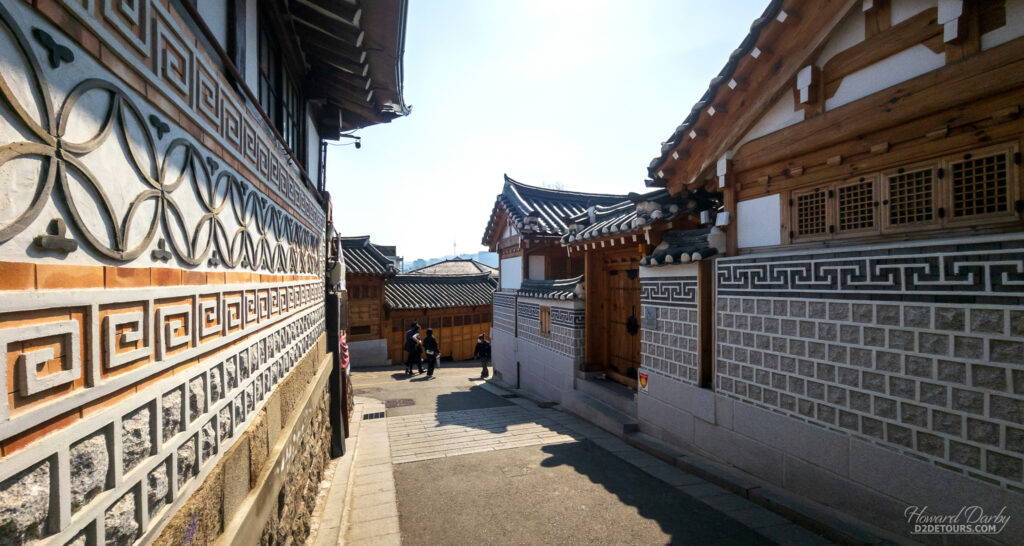

Now for a change of pace … We visited the War Memorial of Korea, a free museum memorializing Korea’s military history. Not surprisingly a good chunk of it is devoted to the Korean War (or as it is known in Korea, the 625 War because it began on June 25th), but the lowest level also included a fascinating look at the country’s conflicts well before 1950. We spent nearly three hours there and I learned a ton. I’m ashamed to admit my knowledge of the Korean War was largely limited to the TV show M*A*S*H. I had no idea the extent to which Canada participated. The United Nations Security Council condemned the invasion by North Korea. The United Nations Command was formed with the authority to dispatch troops to the peninsula to defend the Republic of Korea who, while not a member of the UN General Assembly, had been officially “recognized” and participated in the UNGA as an observer. The Korean War was the first (and only) military intervention by the United Nations; all subsequent interventions have been peacekeeping. A rather unusual coalition of countries contributed support to the UN’s intervention (either military or medical): the United States of America, Great Britain, Canada, Australia, Belgium, Columbia, Denmark, Ethiopia, France, Greece, the Netherlands, India, Italy, Luxembourg, New Zealand, Norway, the Philippines, South Africa, Sweden, Thailand, Türkiye, and of course, the Republic of Korea. Canada supplied the 3rd largest contingent of soldiers! Following the cease-fire in 1953, UN forces remained along the DMZ (demilitarized zone which roughly divided the country in half) until 1967 when American and South Korea troops took over.
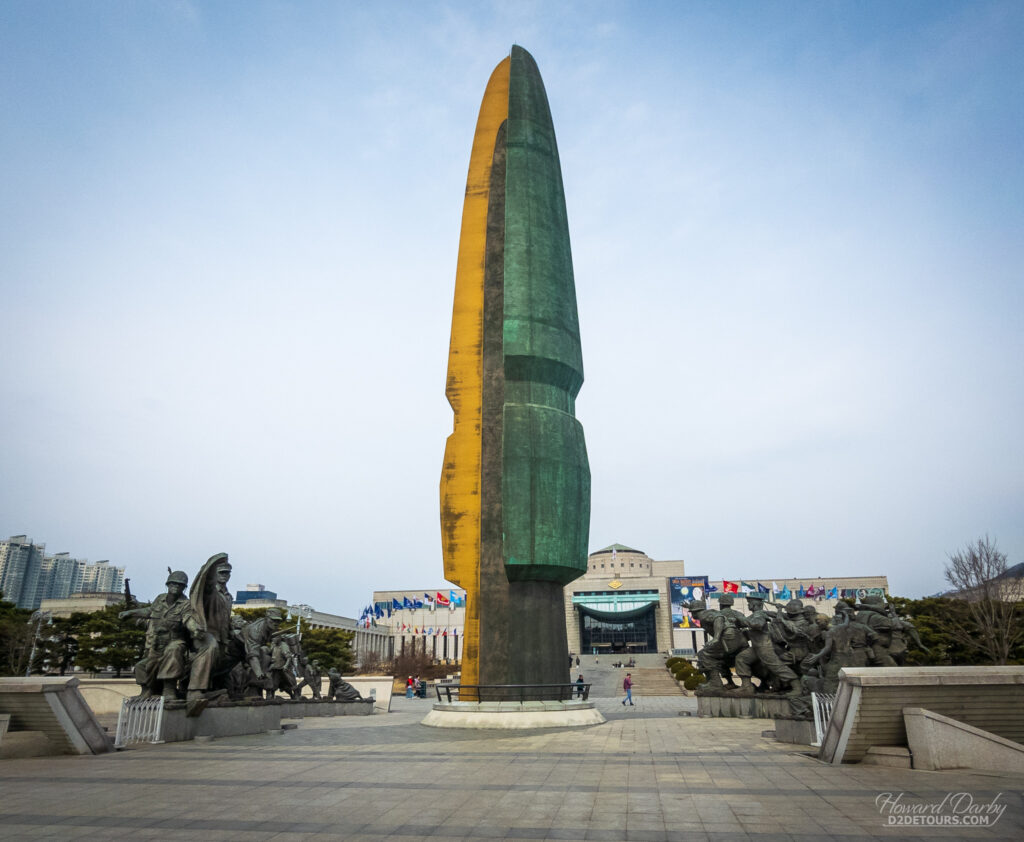
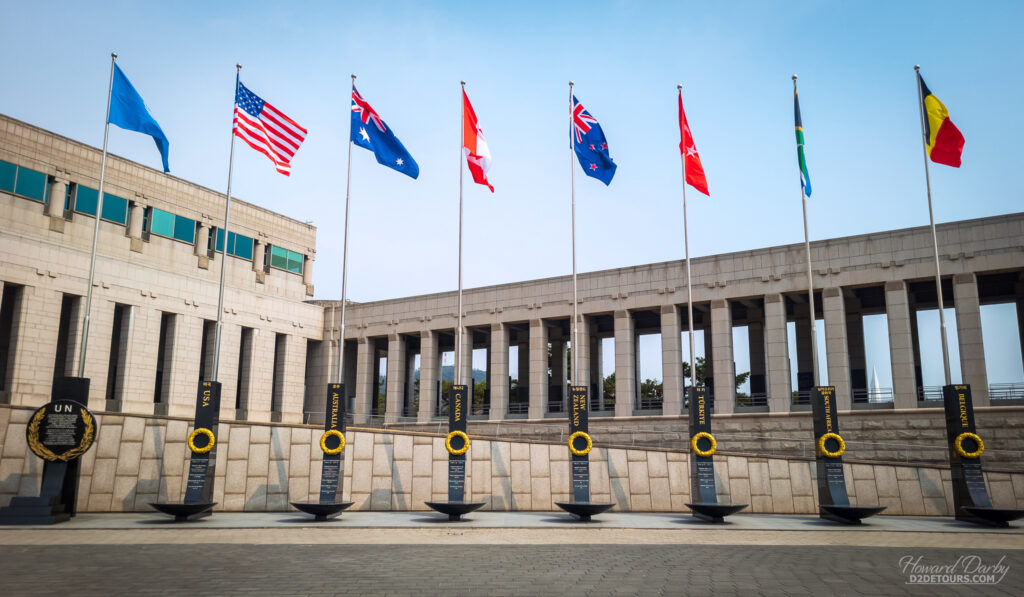
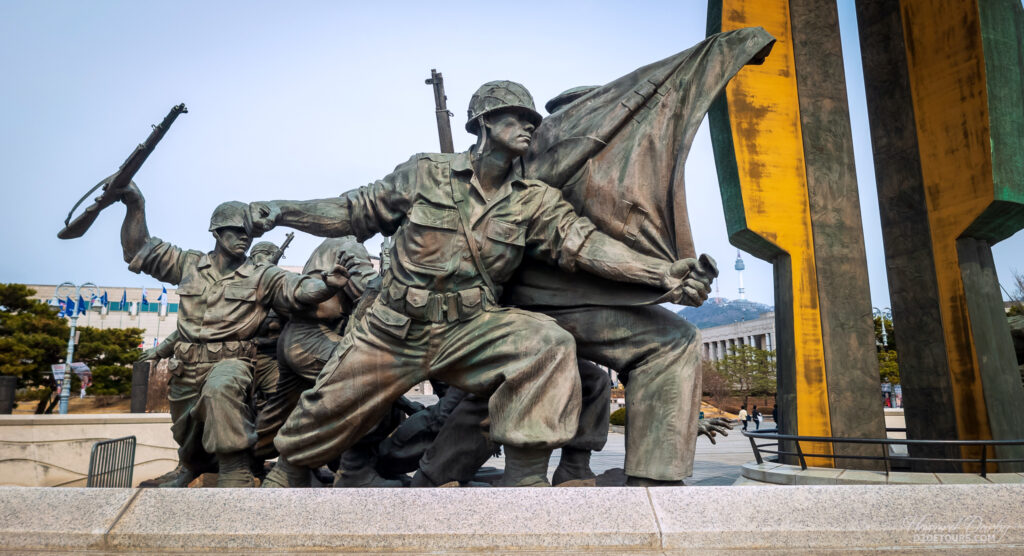
We don’t tend to join tours (don’t like being tied to someone else’s schedule, and they’re often overpriced) but you cannot visit the DMZ unless you are part of an official group. So ₩160,000 ($167 CAD) later we were both onboard an early morning bus (along with about 25 other foreigners) heading north from Seoul. I find tours often have a certain propaganda quality to them so bear in mind everything that follows is a synopsis of the spiel provided by our tour guide.
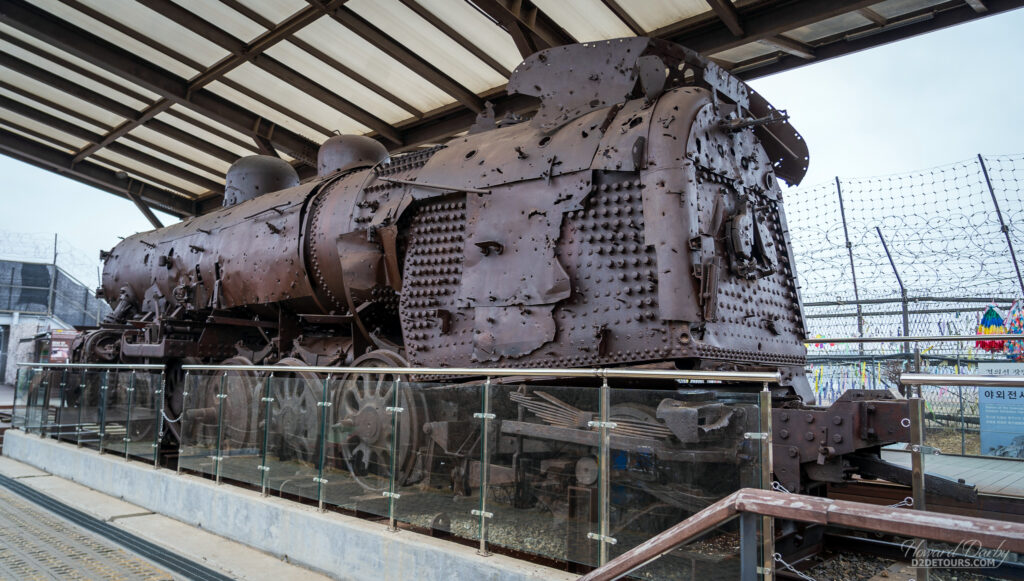
The very first point our guide stressed was that the war is not over. The Armistice Agreement signed on July 27, 1953 simply created a 250km (160 mi) long, 4km (2.5 mi) wide buffer zone. It is heavily militarized (although more so on the northern side) and we had to bring our passports with us on the tour to provide to the guards stationed at the Zone in order to be granted access.

The first stop on the tour was the Imjingak Nuri Peace Park, just outside the actual DMZ, juxtaposed with Pyeong Hwa Land, an amusement park. When the arbitrary geographic barrier of the DMZ was established it immediately severed all contact between family and friends on either side. Family relationships are a cornerstone of Korean culture. The Peace Park was built so that South Koreans would have some place to come and feel closer to their missing relatives, but as a family outing it wasn’t particularly engaging for children, hence Pyeong Hwa Land. As our guide put it, grandma and grandpa can come to “cry, cry, cry” at the Peace Park, the younger generation can go “play, play, play” and everyone’s needs are met for a family outing.
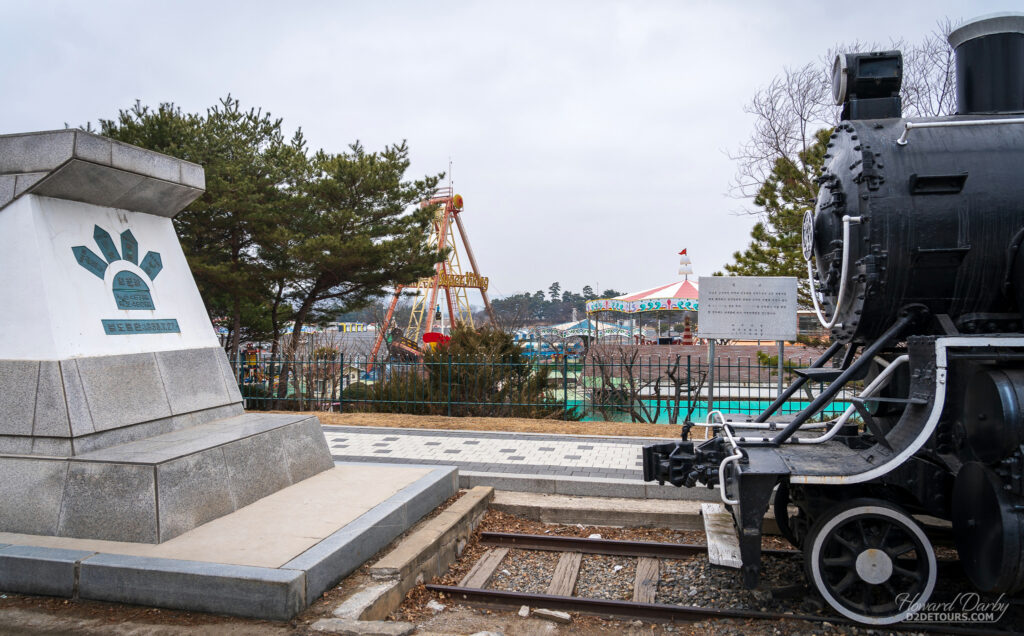
Since the 1960s the North Koreans have been attempting to tunnel under the DMZ in order to spring a surprise attack. Since 1974 four tunnels have been discovered. The third “tunnel of aggression” was discovered in 1978 (following a tip from a North Korean defector). It is an incomplete tunnel about 73m (240ft) below ground running 1,635m (1 mile) in length, with a maximum height of 1.95m (6ft 5in) and about 2.1m (6ft 11in) wide. Based on its dimensions, it has been estimated that approximately 30,000 soldiers, and light weaponry, could have poured into South Korea every hour. We were able to walk the length of the tunnel, hunched over, cracking our heads on the ceiling on numerous occasions (thank God for the mandatory safety helmets we were given) – I can’t quite wrap my head around 30,000 people running through it. No photography is allowed inside the tunnel, but this is a diagram from the visitor center:

The swath of land on which the DMZ was established was not uninhabited. The village of Tae Sun Dong is home to the direct descendants of landowners before the 625 (Korean) War. The residents, 218 people according to a 2008 census, are protected by the UN and while they can work and travel outside the village (most are farmers), in order to maintain their “resident” status (which comes with some nice perks like tax-free status and an exemption from military service) they must spend a minimum of 240 nights per year within the village – there is a curfew and at 23:00 each night a headcount is conducted.

South Korea just wants peace. They are tired of being a divided country. On April 27, 2018 the “Panmunjom Declaration for Peace, Prosperity and Reunification of the Korean Peninsula” was signed by the leaders of both Korean nations. It outlines the mutual steps necessary to reshape the Declaration into an actual peace treaty (with the cooperation of the United States and China). We capped off our visit by posing on the pastel coloured “DMZ” sign exemplifying the South’s hope for peace. It was kind of a strange day.
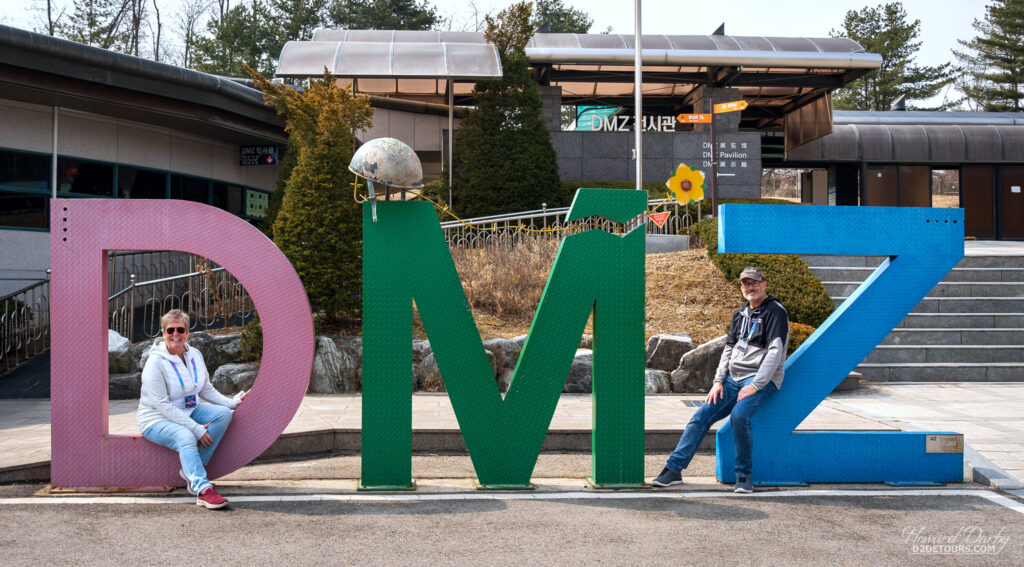
Us – Landing in Seoul so soon after visiting Tokyo we couldn’t help but make some comparisons. Both are big, modern cities – clean, orderly and boast excellent public transit options. However, despite metro Tokyo having roughly three times the population of metro Seoul, we thought it had more charm (if you can apply that kind of a term to a megacity). Seoul left us feeling a bit cold and we didn’t find the people nearly as welcoming. But that’s just our opinion. Off to Vietnam!
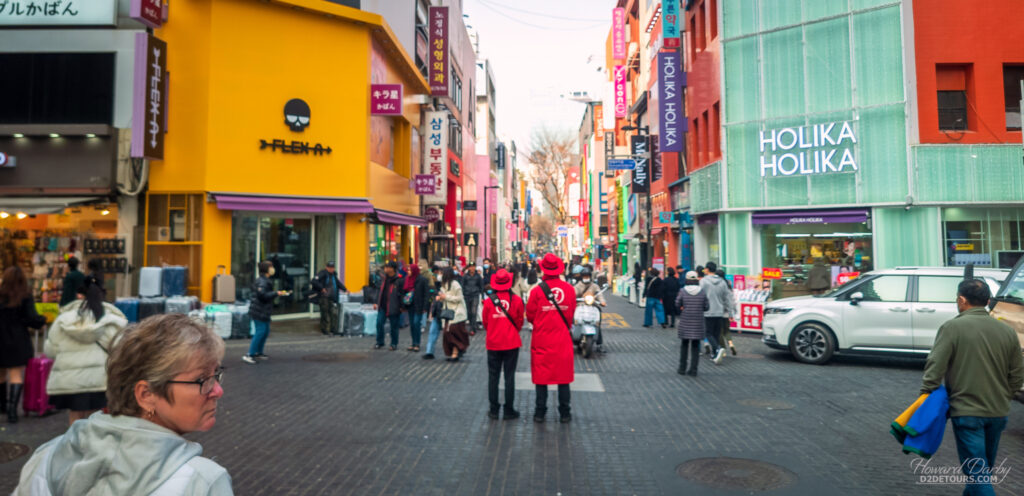
Restaurants – The Koreans have a saying yi yeol chi yeol (fight fire with fire) and much like the British swear a cup of hot tea in summer will cool you down faster than an iced drink, in Korea you combat the heat with a steaming bowl of Samgyetang – ginseng chicken soup. The Tosokchon Samgyetang Restaurant, not far from the Gyeongbokgung palace, has been serving this soul food since 1983. A single serving of samgyetang consists of a whole chicken stuffed with rice, ginseng, garlic and jujube fruit (like a date) simmering in broth. As the chicken shreds and the stuffing seeps into the pot, the broth takes on the consistency of yummy porridge. Seasoning is left to the consumer with salt, pepper, sesame oil, chili sauce, kimchi and more garlic served alongside the hot pot.
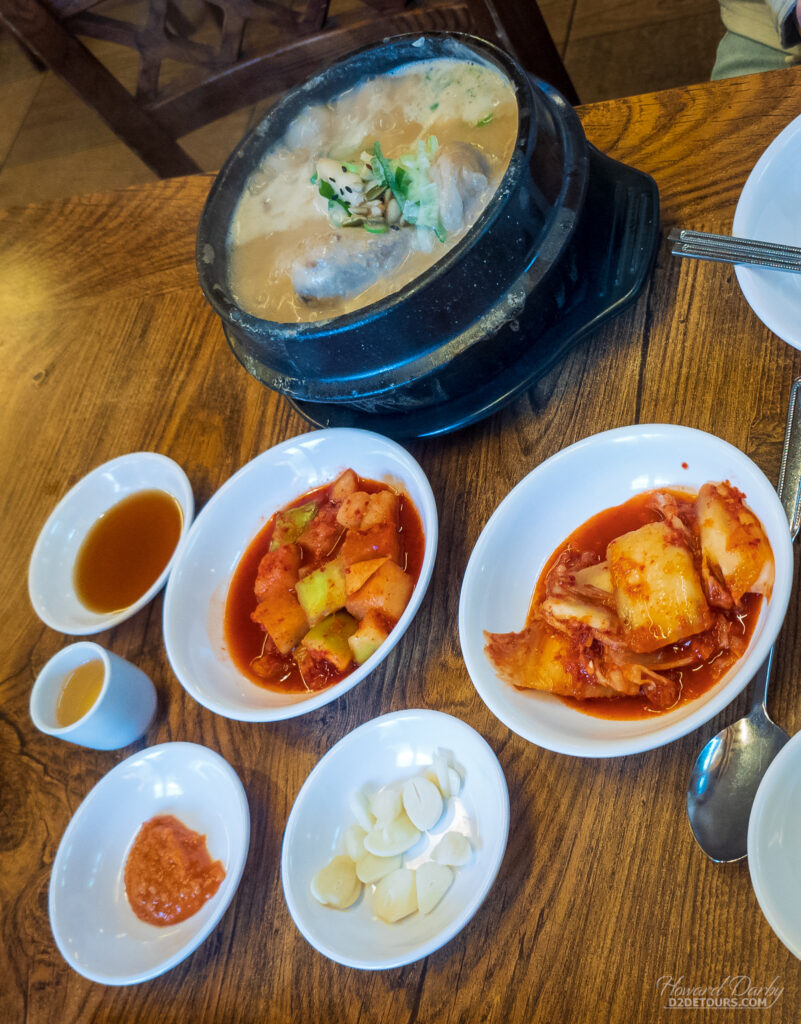
The Tosokchon restaurant will not allow you to order a single dish between two people (although honestly I can’t imagine who could eat a whole chicken themselves), so we ordered one samgyetang and one haemul pajeon (a green onion pancake with shrimp, clam and mussel meat) which was plenty of food to share between the two of us. A shot of insamju (ginseng liquor) is also provided with a meal (reminded me of a weak vodka) and you can enjoy sipping it separately or add it to the broth. The whole meal was $37 CAD and, much like Japan, tipping is not expected in Korea!
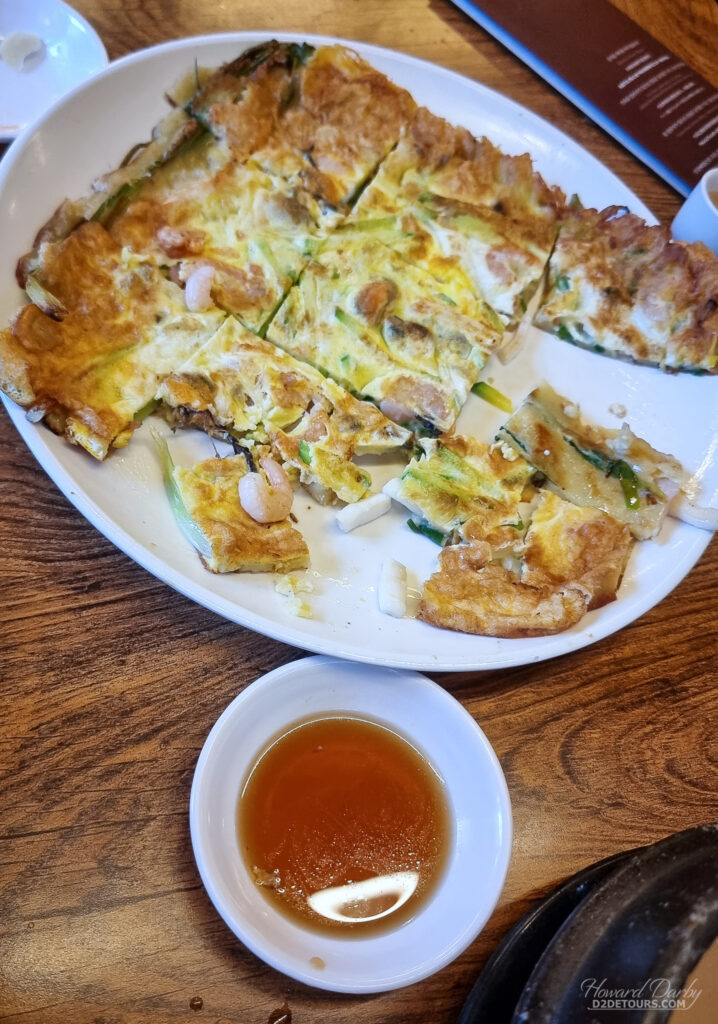
Bibimbap is a popular Korean rice dish. Lightly fried egg, sliced meat, vegetables and hot sauce are served over hot rice and you thoroughly mix (bibim) the toppings with the rice (bap) before eating. I quite liked it; Howard wasn’t so taken with the flavors.
Speech – We always try to add a few basic words to our international vocabulary but I will confess, Korean does not easily slip off the tongue. In my many attempts to speak it, it was clear I was butchering their language (to the point that they often couldn’t even figure out what I was trying to say) so it was easier to keep to English pleases and thank yous, which were definitely understood.
- Ahn-nyong-ha-se-yo – Hello;
- Ahn-nyong-hee ga-se-yo – Good-bye;
- Jwe-song-ha-ji-mahn – Please;
- Gahm-sah-hahm-ni-da – Thank you;
- Chon-mahn-eh-yo – You’re welcome;
- Neh – Yes;
- Ah-nee-oh – No;
- Sil-le-hahm-ni-da – Excuse me;
- Mi-an-hae-yo – Sorry.
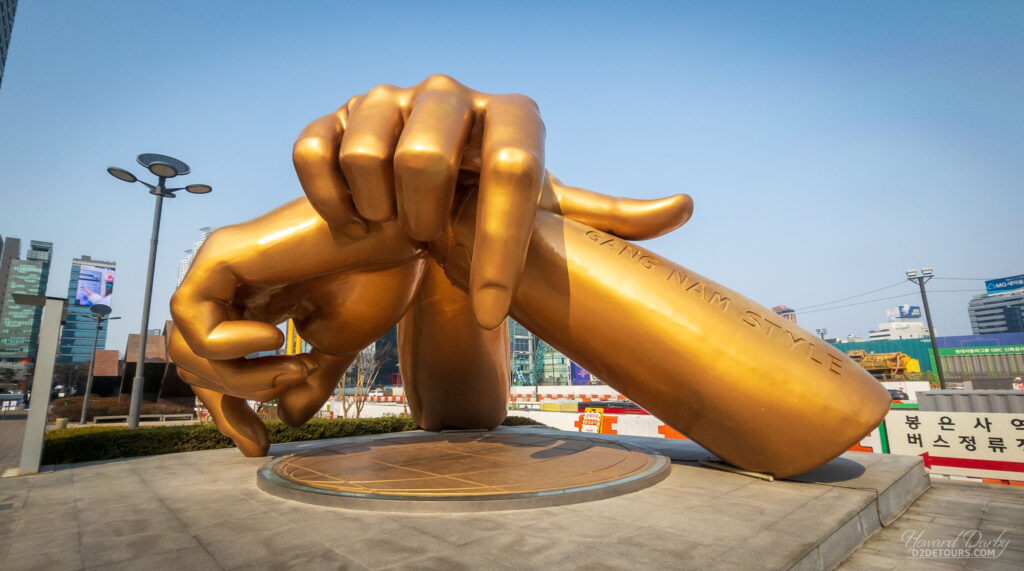
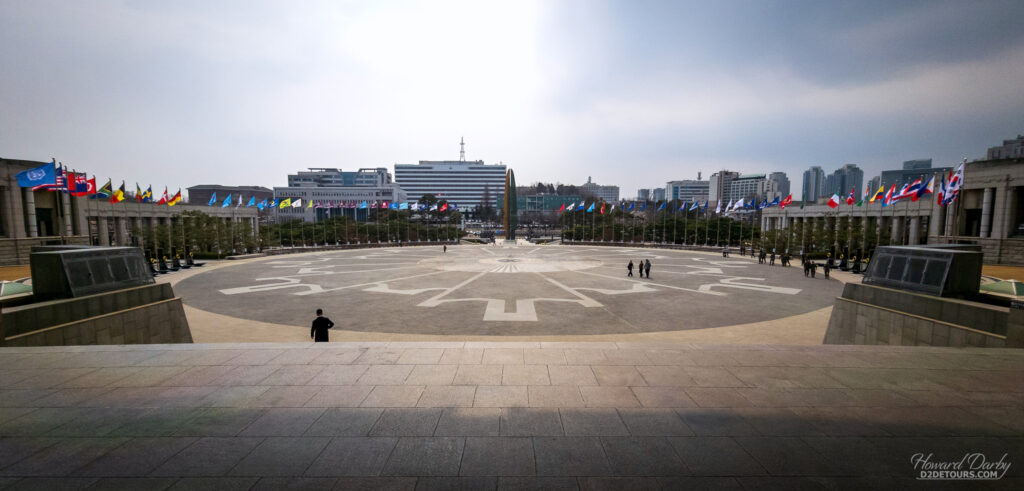
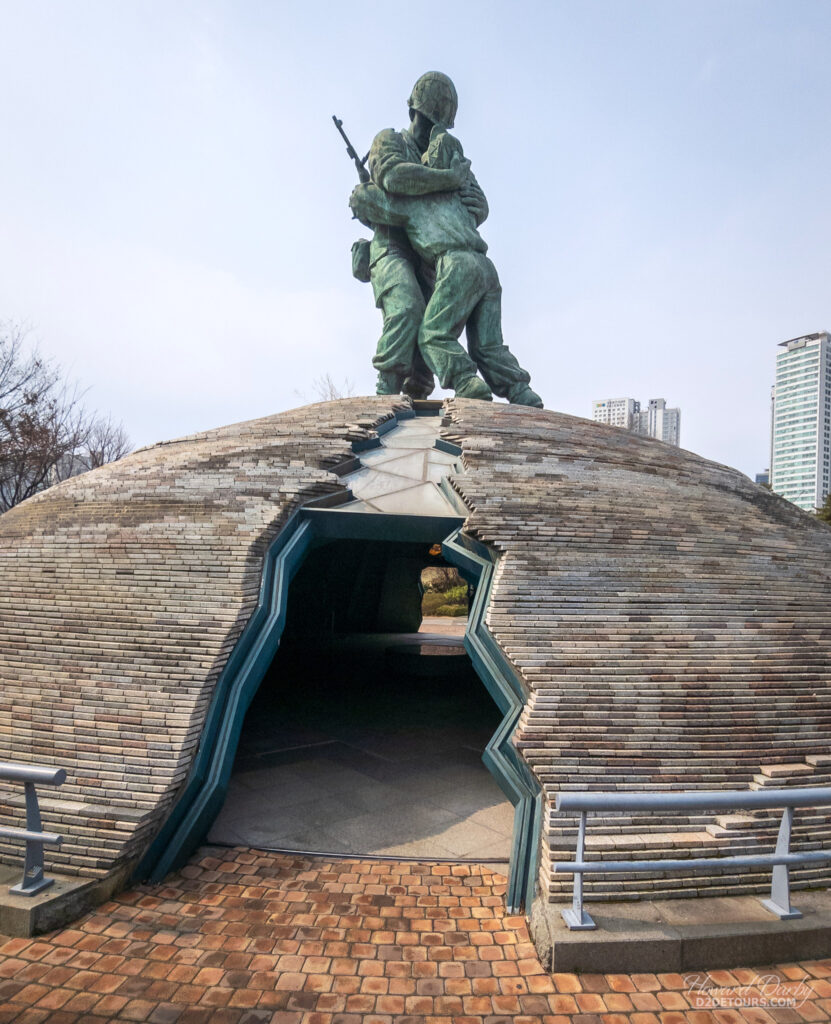

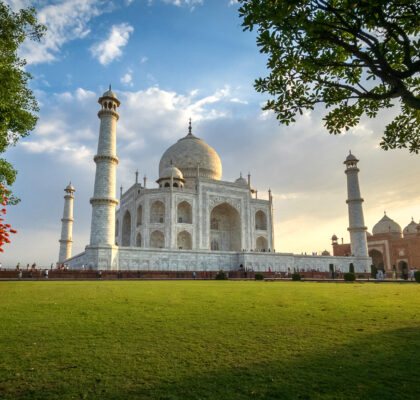
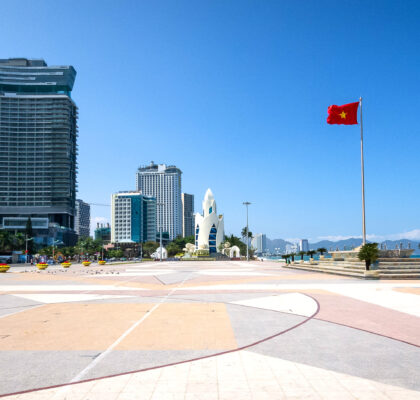
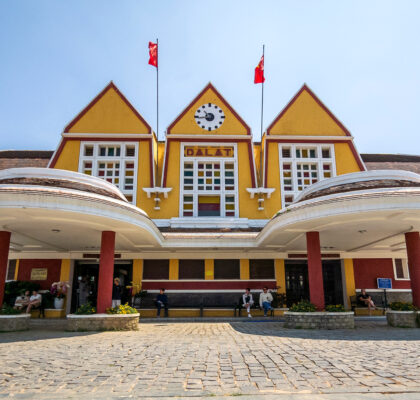
Well done to both of you for recording your trip in such detail. Next time we’re together, I’ll teach you some Korean. Kapshida!